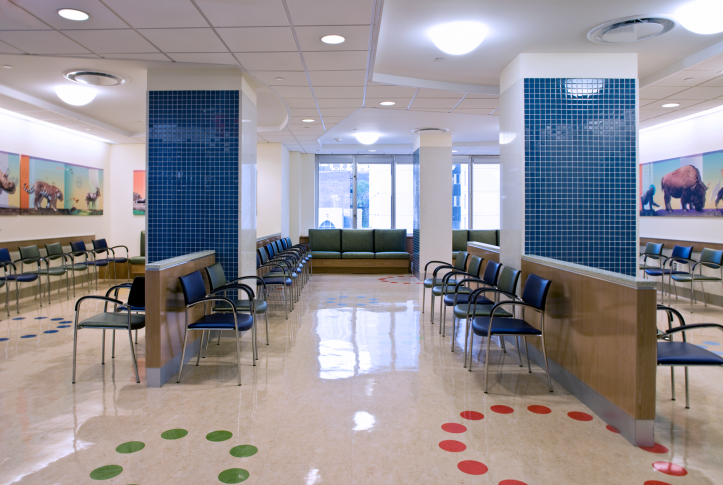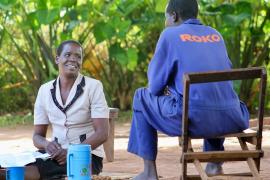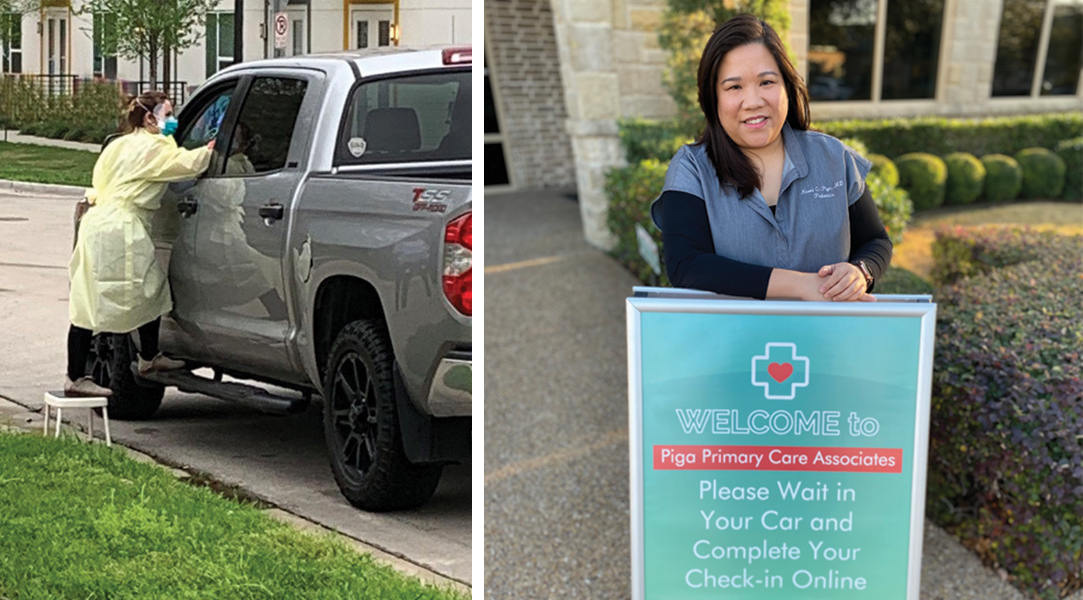Gregory Adams, M.D., a pediatrician at Blue Ridge Pediatric and Adolescent Medicine, has been taken aback by the number of children and teens exhibiting mental distress. “Anxiety levels have never been higher — at all ages. One afternoon was nothing but new-onset anxiety. Every patient,” he says. It’s hard for Adams to refer children and teens to therapists because providers aren’t seeing patients in person or don’t accept Medicaid. Adams has been prescribing medications and offering reassurance, giving his cell phone number to those who are depressed or suicidal. “Just knowing they have my number gives them peace of mind,” he says.
Piga has seen a similar trend of children manifesting anxiety and depression at younger ages. “I’ve actually done more prescribing in the last year than I have in the previous 14 years — and for younger children,” she says.
Part of the problem is that during the pandemic children and teens have been deprived of opportunities to engage in extracurricular activities that gave their lives meaning. “You realize for many kids, their piece of happiness is some type of activity. They pass their classes so they can play basketball or participate in band and that got taken away. We definitely see that having a huge impact on behavioral health, motivation, mood, all of it,” Bui of University of North Texas Health Science Center Pediatric Clinic says.
Offering Supports Beyond the Office
With fewer office visits, the pediatric practices have been working to offer additional support to families during the pandemic.
Bui and a medical student came up with the idea of having third- and fourth-year medical students reach out to families to check on their mental health and connect them with providers or other sources of support. Through the “Pediatric Mental Health Calls” program, volunteer medical students reached out to high-risk groups: teenagers who may be struggling and new mothers who may be experiencing postpartum depression. After Bui heard reports from local EDs about a spike in child abuse cases, they began calling families with toddlers, a group that accounts for a disproportionate share of child abuse cases. Following a script that involves taking psychosocial histories and screening for problems, medical students made more than 3,500 calls from March to November 2020. One of five families asked for some type of support for issues ranging from maternal depression to food insecurity. Nearly one of five teens (17%) asked to schedule a mental health visit with a provider.
Child & Family Development, a North Carolina family therapy practice that provides diagnostic and therapeutic services for children, teens, and young adults with mental health needs or developmental conditions, also has increased outreach to parents who may be experiencing strain managing developmental problems at home. It set up virtual parenting sessions for parents of children with autism. The practice has seen an increase in the numbers of parents reaching out for help with children who struggle to learn; with virtual school, parents are seeing firsthand the challenges. “Parents are saying I just didn’t know what a big struggle it was,” says Gretchen Hunter, Ph.D., clinical neuropsychologist and clinical supervisor.
Hunter worries about other children whose parents are putting off visits out of fear of the virus or wishful thinking that problems will vanish with the pandemic’s end. The practice has begun hosting Zoom webinars to offer guidance on remote schooling and to drive home the message that with developmental delays, “the risk of not contracting the virus doesn’t outweigh the reward of addressing a problem early when there is a secure, safe environment to get assessment and diagnosis,” says Pam Jones, M.B.A., president of the practice.
Policy Implications
It has become clear that shuttered schools, missed soccer games, and the consequences of other social-distancing restrictions, as well as the economic fallout of the pandemic, are putting strain on children and teens. The pediatricians we spoke with are spending less time treating flu and other seasonal ailments, and more time helping kids struggling with anxiety and depression, as well as checking in with families — some applying for food support and other benefits for the first time. Based on our conversations, the following policies would support their work during the pandemic and beyond.
Help with pandemic-related costs and adequate payment for testing. Pediatricians have worked hard to encourage families to feel safe in their offices. They are spending more on personal protective equipment (PPE) and other cleaning supplies while at the same time billing for fewer visits. Last year, the American Medical Association established a code to bill for the costs of PPE and other safety provisions, but many insurers are not reimbursing for it. And many pediatricians say insurers are not reimbursing anywhere near their costs for coronavirus testing.
The American Rescue Plan Act of 2021 may help some pediatricians; it includes $8.5 billion in direct support for rural providers that demonstrate lost revenue and additional expenses related to the pandemic, as well as funds for vaccines, treatment, personal protective equipment, testing, contact tracing, and public health workforce development.
At the same time, some of the pediatricians we spoke with are dismayed they haven’t been tapped to help in the coronavirus vaccination campaign; historically, pediatricians along with pharmacists have done the lion’s share of all vaccinations. “We do flu vaccines for kids and their parents in two to three months,” says Watts of Capital Area Pediatrics. “We have that infrastructure and we’re used to reporting. It’s already hardwired for us.”
Support to help pediatricians treat the growing number of kids with mental health problems. Pediatricians are seeing the high toll the pandemic is taking on kids’ well-being. They are struggling to help them in their own practices or find therapists and psychiatrists to refer them to.
Many of the families in Piga’s Texas practice cannot find affordable therapists or psychiatrists; many providers don’t accept insurance. Piga has access to the state’s Child Psychiatry Access Network, which enables pediatricians to receive same-day consults from pediatric psychologists or psychiatrists about mental health assessments, symptoms, and medications as well as help with referrals; many other states and American Indian tribes have similar programs. “This helps pediatricians become comfortable with prescribing psychiatric medicines for simpler cases and frees up the child psychiatrists for the difficult cases,” Piga says. The American Rescue Plan Act provides an additional $80 million to support such approaches through the Pediatric Mental Health Care Access program.
Capital Area Pediatrics’ providers have benefitted from REACH (Resource in Advancing Children’s Health) Institute training, in which they learn from child psychologists and psychiatrists about ways to use structured screening tools, manage psychiatric medications, and look for red flags indicating kids may need specialty support. The training is paid for through a grant from the Virginia chapter of the American Academy of Pediatrics. To build the practice’s in-house capacity, Watts has been trying to hire a therapist, but has struggled because of workforce shortages and low reimbursements for therapeutic services. Changing the rules to allow therapists working toward licensure requirements to bill for their services would help, she says.
Hunter of the family therapy practice Child & Family Development says billing codes need to be adjusted to allow behavioral health specialists like her to provide short-term and consultative services to pediatricians. “We would be able to provide more targeted interventions and consultation to pediatricians with more flexibility,” she says.
Support for families beyond the office. The pandemic has prompted pediatricians to reach out in new ways: proactively calling their patients, using video to connect with them in their homes, and tapping social media to offer information and guidance. Pediatricians we spoke with noted the importance of sustaining these connections beyond the pandemic; this will require payers to continue to reimburse for telehealth visits on par with in-person services.
Responding to families’ need for food, housing, and other social supports is a common challenge. Pediatricians in North Carolina have access to NCCare360, a statewide platform that enables health care providers to easily connect to human services agencies and nonprofits through a network of on-call navigators, a shared resource repository, and electronic referrals. But many pediatricians rely on ad hoc networks of resources, or hand patients lists of places to call themselves.
Looking Ahead
One year into the pandemic, pediatricians and other primary care providers are still grappling with the evolving public health crisis that places high demands on them — from extra time spent counseling patients to protecting the physical and mental health of staff and strategizing to make up for revenue shortfalls that one study estimates at an average of nearly $68,000 per provider.
We interviewed just a handful. Their experiences indicate the last year has had some silver linings. For instance, declines in sick visits suggest that public health interventions including masks work. In addition, practices found new ways of leveraging the enthusiasm of medical students and developed nimble responses to promoting vaccinations that offer lessons for this pandemic and future infectious disease outbreaks.
It will be important for policymakers and payers to recognize what has worked well during the pandemic and bolster pediatricians’ efforts to support families for the long term.



